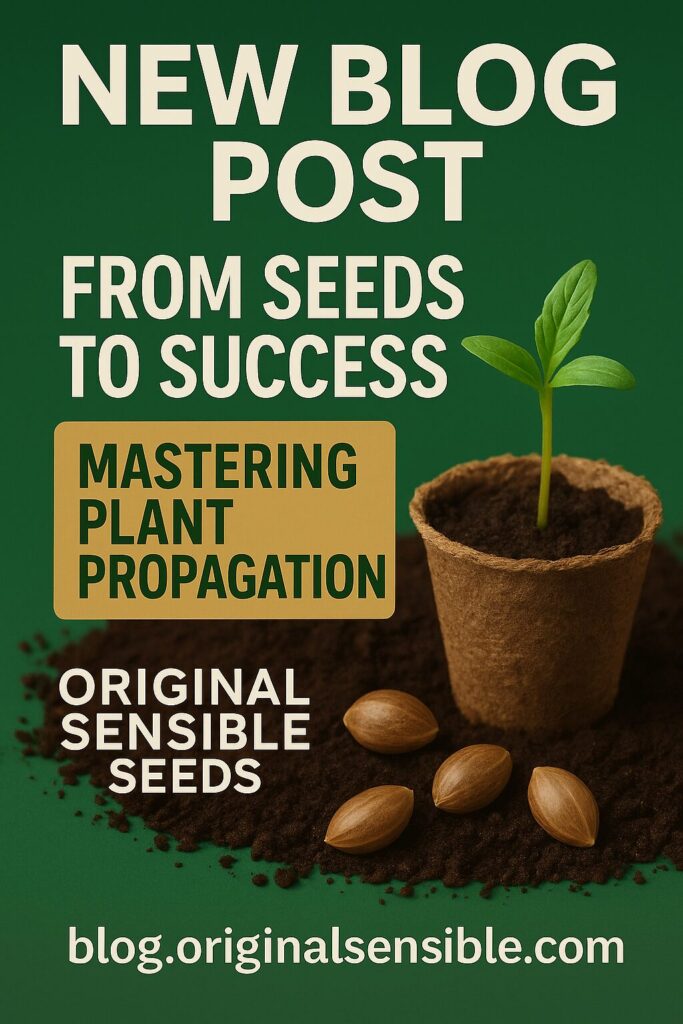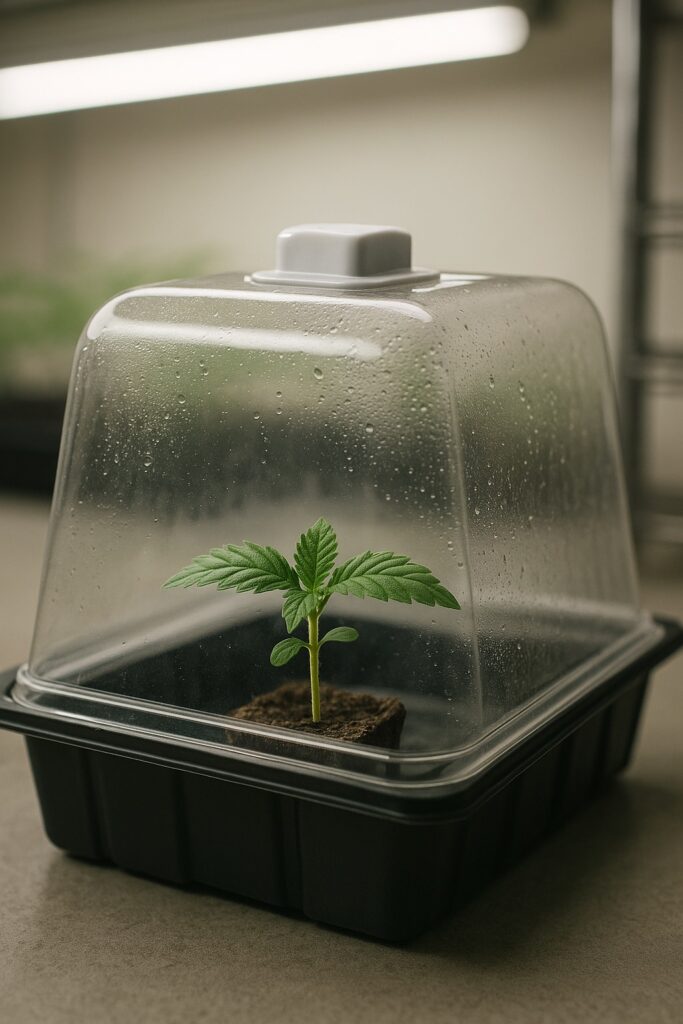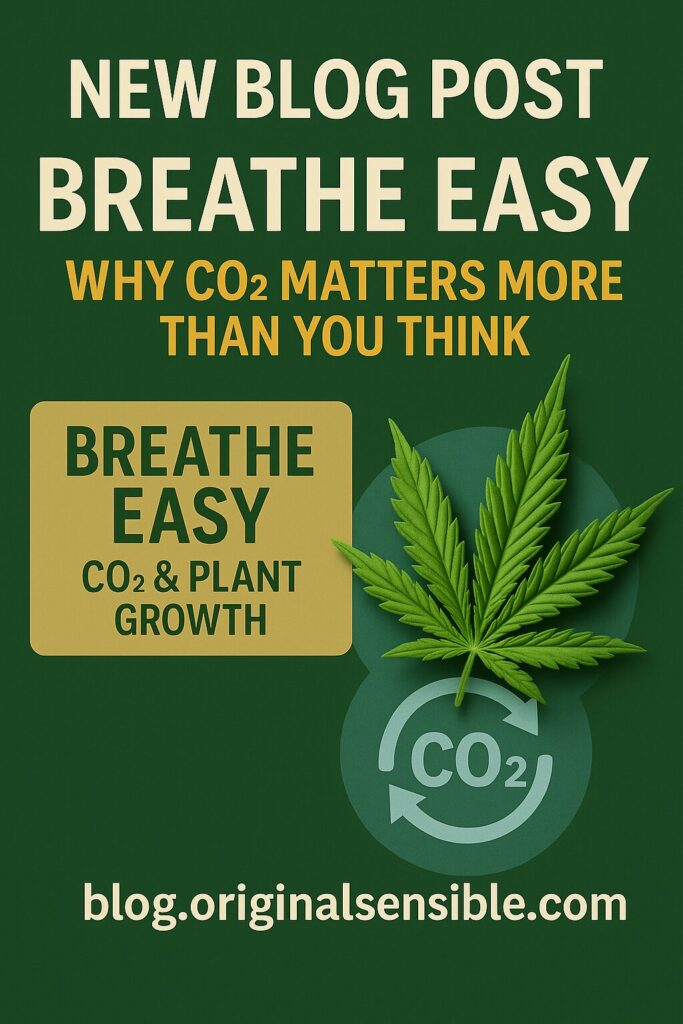
Every plant’s journey begins with a single act: propagation. Whether you start from seed, clone, cutting, or tissue culture, the method you choose—and how well you execute it—sets the foundation for everything that follows. This phase isn’t just about getting a plant to sprout; it’s about ensuring strong, uniform, and healthy growth from the very beginning. Mistakes here can echo through the entire grow cycle. Check out our in depth Grow Guide Here.
Let’s start by clarifying the four primary propagation methods:
- Seeds whether, feminised or High THC Autoflowers, are fertilized embryos containing genetic material from two parent plants. They offer genetic diversity, meaning every seed is slightly different, which can be beneficial for breeders or growers seeking resilience or unique phenotypes.
- Clones are cuttings taken from an established “mother” plant, which are then rooted to form new plants. Since clones are genetically identical to the mother, this method ensures uniformity in traits like flavour, growth structure, and flowering time.
- Cuttings, while often used interchangeably with clones, can also refer more broadly to any section of plant tissue (like a stem or leaf) that can be rooted to grow a new plant.
- Tissue culture is a lab-based technique where micro-pieces of plant tissue are grown in sterile conditions on nutrient media. This allows for the rapid multiplication of plants and preservation of rare genetics, but it requires specialized equipment and expertise.
For most growers, starting from seed is the simplest and most accessible option. It’s clean, cost-effective, and doesn’t require a donor plant. However, success starts with seed quality. Only source seeds from reputable breeders like Original Sensible Seeds, who test for germination rates, viability, and genetic stability. Store seeds in a cool, dry place, and avoid light exposure until ready to germinate.

Germination is the first step. The goal is to trigger the seed to sprout a root (radicle) and shoot (cotyledons). This requires warmth, moisture, and oxygen. You can germinate seeds directly in your grow medium (like soil or coco), or use methods such as:
- Paper towel method – seeds placed between moist towels in a sealed container.
- Rooting cubes – pre-moistened plugs with ideal structure for early root development.
- Humidity domes and heat mats – help create the consistent warmth and humidity required.
The ideal germination environment is around 22–26°C, with humidity between 70–90%. This high humidity keeps the emerging seedling from drying out. Once the seedling breaks the surface and begins developing leaves, you can gradually reduce humidity to 60–70% to help it adjust. As it grows stronger, bring it down further to around 55–65% during early vegetative stages. This process, known as acclimatisation, hardens the plant to your normal environment and builds resilience.
Light also matters. Seedlings need gentle, full-spectrum light. Too intense, and they’ll stretch or burn. Too dim, and they become leggy and unstable. Use LED or fluorescent grow lights positioned 20–30cm above the canopy, adjusting as needed. Keep light on for 18–20 hours a day during this stage to encourage strong, upright growth.
If you want genetic consistency, cloning may be your path. Clones are made by cutting a branch from a healthy mother plant, dipping the cut end in rooting hormone, and placing it into a moist medium like rockwool or perlite. High humidity—typically 80–95%—is essential during rooting, as clones cannot take up water until they develop roots. A propagation dome with daily ventilation and misting is key. Once roots emerge (usually within 7–14 days), you must harden off the clone by slowly reducing humidity and increasing airflow and light strength to prepare it for transplanting.
Tissue culture, while powerful, is mostly used by commercial operations or genetic preservation projects. It allows for the propagation of thousands of disease-free plants in a short time. However, for most small growers, the equipment and sterility required put this method out of reach.
Regardless of your method, successful propagation is about one thing: creating the ideal microclimate for fragile life to begin. That means stable warmth, soft light, moist (but not soggy) conditions, and clean air movement. Handle young plants gently, and never rush the process. Weak starts lead to weak finishes.
Once your young plant is rooted and thriving, it’s ready to grow—but it still needs one invisible ingredient: carbon dioxide. In the next post, we’ll explore the vital role of CO₂ in photosynthesis, and how boosting it can dramatically enhance plant performance—when done right.
Stay tuned for Blog Post 7: “Breathe Easy – Why CO₂ Matters More Than You Think.”

Get early access and subscriber-only tips by joining our email list today.







